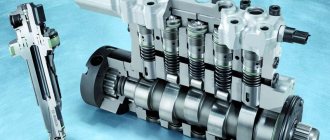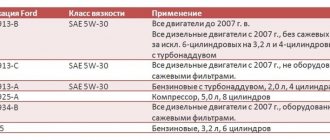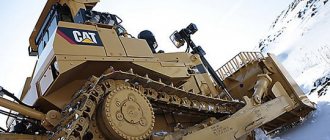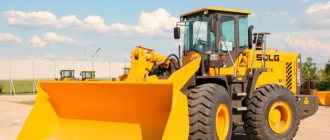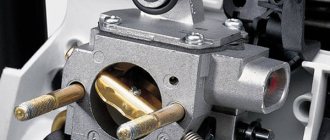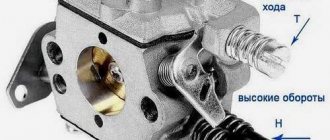The T-80 is the world's first mass-produced tank with a gas turbine engine (GTE). Work on equipping tanks with power plants of this type began in the late 1950s. At that time, helicopter engines were installed on prototypes of combat vehicles. It quickly became clear that they were unable to operate normally in ground conditions - vibration and clouds of dust quickly disabled the gas turbine engine. We had to develop the engine from scratch. But where did the idea of installing a gas turbine engine on a tank come from? “Firstly, in this way they wanted to solve the problem of increasing the combat readiness of the vehicle in our harsh climate,” says Sergei Suvorov, a military expert, candidate of military sciences, and a former tank officer. — In order for a tank with a diesel engine to start moving at temperatures from 0 to -20 ° C, it is necessary to first warm up the engine using a special device - a heater - for 20-30 minutes, then start the power unit and warm it up for about 10 more minutes at idle until the coolant temperature in the cooling system rises to approximately 40 °C. Thus, in winter it takes a total of 30-40 minutes for a tank to leave the park on alarm, which is a lot in combat conditions. The gas turbine tank can start moving within 45 seconds after pressing the engine start button, regardless of the ambient temperature.
The second advantage of gas turbine engines is the so-called engine adaptability coefficient. The higher its value, the simpler the gearbox design can be. The T-80 gearbox is similar to that installed on the T-64, but one planetary gear has been removed - as a result, instead of seven gears, there are only four. And simplification always means increased reliability and cheaper design, reducing driver fatigue. However, the gas turbine engine itself is noticeably more expensive than the diesel engine.”
Don't suffocate in dust
Another impetus for Soviet designers was the information that the United States had become interested in the topic of gas turbine tanks. In the conditions of the Cold War and the arms race, the Soviet leadership could not ignore such information. Our defense industry had to urgently get to work, and as a result, the T-80 was born several years earlier than its gas turbine competitor, the M1A1 Abrams tank.
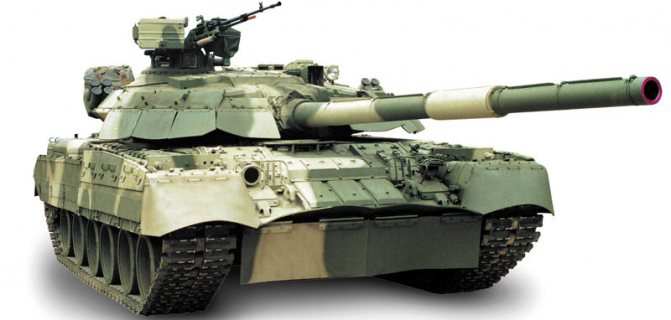
One of the main tasks that the designers had to solve was protecting the gas turbine engine from dust. The resulting air purification system is unique and has no analogues in the world. The gas turbine Abrams also has a cleaning system, but during the American operation in Iraq “Desert Storm” it turned out that in a sandstorm, an American tank could move or stand still with the engine running for no more than 15 minutes. Then we had to stop and shake out the sand from the paper filters. In the T-80, direct-flow cyclones - vortex gas scrubbers - fought dust. In addition, the pneumatic vibrator shook off sand from the nozzle apparatus that was most susceptible to contamination. After stopping the engine, the dust was also shaken off the turbine blades, and sand did not bake on them in the form of a glassy mass.
Weapon
Enemy Trophy: Test Drive of the Panther Tank
Detonation engines will replace the gas turbine core

Testing a prototype of a rotary detonation engine
Aerojet Rocketdyne
The American company Aerojet Rocketdyne has received a contract from the US National Energy Technology Laboratory to develop a new gas turbine power plant based on a rotary detonation engine. According to Aviation Week, the work that will result in the creation of a prototype of the new installation is planned to be completed by mid-2020. According to preliminary estimates, the new type of gas turbine engine will have at least five percent better performance than conventional such units.
Modern gas turbines operate on the principle of converting the energy of expanding heated gas into mechanical work. In such installations, pre-compressed atmospheric air is supplied to the combustion chamber, where it is mixed with fuel. Then this mixture is ignited and, when burned, forms a large amount of gaseous combustion products that exit the nozzle under high pressure. At the outlet, these gases rotate a turbine, part of the mechanical work of which is transferred to the driven unit, for example, an electric generator.
The part of the engine that is responsible for supplying air, mixing it with fuel and combustion is called the gas generator, or the core of the installation. The combustion front in the fuel-air mixture in the combustion chamber of the gas generator of modern engines propagates at a speed less than the speed of sound. This combustion process is called deflagration. In a running gas turbine engine, the combustion process is constantly maintained.
In the new gas turbine unit being developed by Aerojet Rocketdyne, the combustion of the fuel-air mixture in the combustion chamber will be detonation. This is the name of the process in which the combustion front propagates through a substance at supersonic speed. During detonation, a significantly greater amount of energy is released than during deflagration - this is due to the fact that in the first case the fuel burns more completely. In the new installation, detonation in the combustion chamber will be constant, which will significantly simplify the design.
Today, two types of detonation engines are being developed: pulsating and rotary. In pulsating, the fuel-air mixture is supplied ready to the combustion chamber at regular intervals. Between each feed, the mixture detonates, and its combustion products are removed in pulses. Pulsating detonation engines are not suitable for use as gas generators in gas turbine installations, since high-frequency pulsations will lead to rapid destruction of the turbine blades and unstable operation of the installation.
Rotary engines, the first of which were developed in the USSR in the 1950s, use an annular combustion chamber. In it, the fuel mixture is supplied sequentially through radially located valves. During engine operation, the detonation wave “runs around” the annular combustion chamber, and the fuel mixture behind it has time to renew itself. In this case, there is no need to feed a ready-made fuel mixture into the combustion chamber of a rotary engine—the high-pressure front moving in front of the detonation wave effectively mixes the necessary components.
Combustion products in a rotary detonation engine leave the combustion chamber constantly. This allows them to be used as a gas generator in a gas turbine installation. It is planned to spend $6.8 million on the development of a detonation gas turbine unit. In addition to Aerojet Rocketdyne, several American universities will be involved in the project of a new detonation gas turbine plant. In particular, Purdue University will test a detonation gas generator in conjunction with a multistage turbine.
In addition to Aerojet Rocketdyne, the US Navy Research Laboratory is developing a detonation gas turbine unit. The US military intends to use such installations on surface ships instead of traditional gas turbine engines. The developers believe that the creation of a rotary detonation gas generator will significantly reduce the size of gas turbine units. By installing new engines on ships, the US Navy expects to free up more space on them.
Meanwhile, in August of this year, the Russian specialized laboratory “Detonation liquid rocket engines” tested the world’s first full-size technology demonstrator of a detonation liquid rocket engine running on oxygen-kerosene fuel pair. The new power plant will make it possible to replace conventional liquid rocket engines in promising launch vehicles. Thanks to this, new media can be made more compact and lighter.
Vasily Sychev
Comfort and cleanliness
“When the T-80 is moving towards you, you can’t hear the car at all at a distance of up to 30 m,” says Sergei Suvorov. — The first thing that reaches the ear is the clanging of the teeth of the drive wheels. The tank does not smoke, releasing almost clean hot air. I served on the T-80 and I think that in terms of comfort among domestic tanks it had no equal until the appearance of the T-90AM. Fairy tales about comfort in Western-made tanks have remained fairy tales. The level of ergonomics in all Abrams, Leopards, Merkavas and other Challengers is approximately at the level of the T-55 or T-62. In the "eighties" at -35°C, the driver took off his clothes and underwear, I sat in the turret in the commander's seat in chrome boots. No mittens - thin leather gloves. You can’t drive other cars in the cold without several layers of clothing, fur mittens, a woolen face mask and felt boots.”
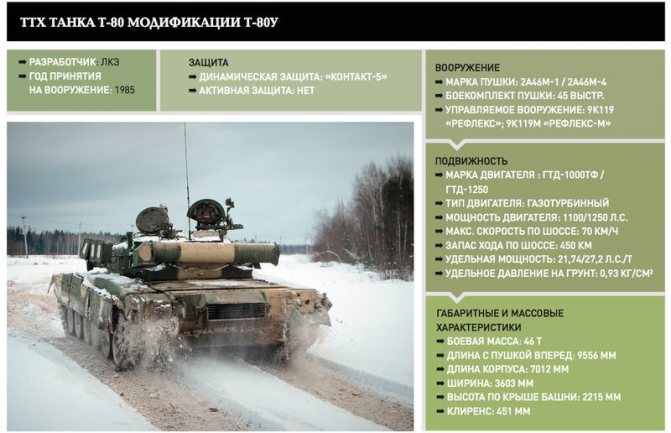
The T-80U is the most advanced vehicle of the entire T-80 family today. In this modification, which appeared in 1985, a new set of weapons was used. A few years later, the same complex was installed on the T-72B tank, after which and a number of modifications the tank received the name T-90. It has a more powerful GTD-1250 engine (1250 hp versus 1100 hp for previous modifications).
Last year, reports appeared about plans to modernize the country's fleet of T-80BV tanks, which includes several thousand vehicles, and although the parameters of the program have not been officially announced, it can be assumed that the result will be a combat vehicle that is not inferior in combat properties to the T-80U (and in superior to it in some respects). The engine will probably be replaced with a GTD-1250, the tank will be equipped with a 1A45 Irtysh fire control system with a laser sight-rangefinder, a digital ballistic computer, a combined night sight and a guided missile system capable of firing Invar-M type missiles. The vehicle will also receive modern dynamic protection.

On the way to a hybrid
One of the main complaints against the T-80 tank is the gluttony of its gas turbine engine. It’s hard to argue with this - gas turbine engines really consume more fuel than diesel. “The main type of fuel for this tank is diesel fuel,” says Sergei Suvorov, “but the T-80 can run on kerosene and gasoline mixtures. Once, while serving in the Urals, I was faced with a situation where my tanks were practically running on water. Our tanks were filled with some kind of white, milk-like liquid, which probably contained at least 50% water. I then asked myself the question - how long would Abrams drive on this hellish mixture? And the T-80s drove around as if nothing had happened. Moreover, the air temperature that day was below -10°C. But the battalion passed the test. However, then problems with the operation of the engine fuel system began due to moisture.”
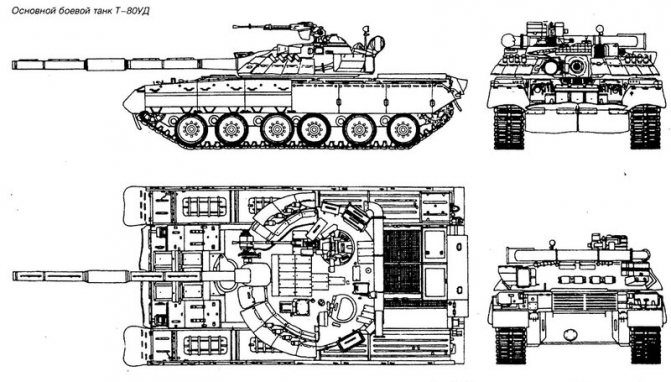
According to Sergei Suvorov, the relatively low efficiency of the T-80 is associated not only and not so much with the use of gas turbine engines, but with the design of tank gas turbine engines. Unlike a diesel engine, the T-80 engine has lower throttle response. To reach maximum speed, and therefore power, a diesel engine needs half a second, while a GTD-1000/1250 needs three to four seconds. If there is a hole in the path of the tank, the driver must release the gas pedal, that is, reduce the fuel supply. The engine suddenly slows down and the tank actually stops. Then the mechanic presses the fuel pedal again, but it takes a few more seconds for the turbine to spin up again. To avoid standing in pits, tankers were trained to spin the turbine to maximum speed, and then slow down in the pit using the braking system. At the same time, the tank does not stall - since there is no rigid connection between the engine turbine and the transmission, the connection between them is only gas-dynamic, but the fuel continues to flow like a river. “The tank gas turbine engine initially used a not entirely correct fuel supply ideology,” explains Sergei Suvorov. — For example, in a number of aviation gas turbine engines, after startup, a given value of constant revolutions is automatically maintained, and the power on the shaft is controlled by changing the fuel supply, without changing the turbine speed. If the same system existed in a tank engine, then the fuel consumption would be almost the same as on a diesel engine.” However, the design idea does not stand still. A promising gas turbine tank engine GTD-1500 has already been developed, which is not inferior to diesel engines in terms of efficiency.
What is a gas turbine engine?
Today, there are several different types of engines that differ from each other in operating principles. One of them is a gas turbine engine. It was created in such a way that, having adopted all the key advantages of gasoline and diesel piston engines, it received a number of undeniable advantages.
A gas turbine engine operates by passing fuel through a series of turbine blades and propelling them using expanding gas. It refers to internal combustion models. Gas turbine engines are divided into single- and two-shaft. Their efficiency is directly proportional to the combustion temperature of the fuel. The most basic models are single-shaft and have a single turbine. Twin-shaft ones are not only more complex in design, but also capable of withstanding greater loads.
Typically, gas turbine engines are used in trucks, ships and locomotives. Experiments are being carried out to develop such mechanisms for passenger cars.
Currently, there are a large number of models of such engines, many of which significantly surpass their predecessors with greater performance, smaller dimensions, dimensions and weight. Also, the gas turbine engine is safer and more environmentally friendly. It produces less noise and vibration and also consumes much less fuel. These are the main advantages that a gas turbine engine has.
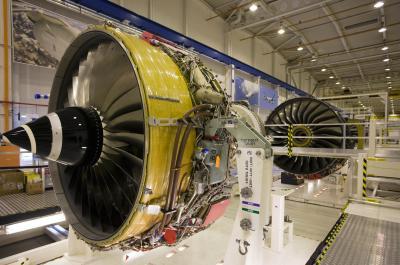
The first such mechanism was created by the Norwegian scientist Egidius Elling with his own hands in 1903. Since then, no one has been refining it until 1920, when, at the end of the First World War, Dr. A. Griffith began to make his own changes to its design. And after the end of World War II, jet engines came into mass production as the most efficient method of powering aircraft.
Currently, the gas turbine engine continues to be actively improved. It is most widely used in aircraft turbines, driving its blades, and in military equipment.
It was gas turbine mechanisms that gave humanity many modern opportunities. Without them, transcontinental gas transfers and large airliner flights over long distances would not exist. A gas turbine engine is capable of generating huge amounts of energy with minimal consumption of fuel resources. It represents the most complex technological design of all that have been developed over the past century.
So, the gas turbine engine is one of the most grandiose discoveries of the twentieth century, thanks to which humanity has gained enormous opportunities for improving technology. A particularly valuable contribution of this development is that it saves fuel resources and causes virtually no harm to the environment, which is extremely important in our time of global environmental crises.
